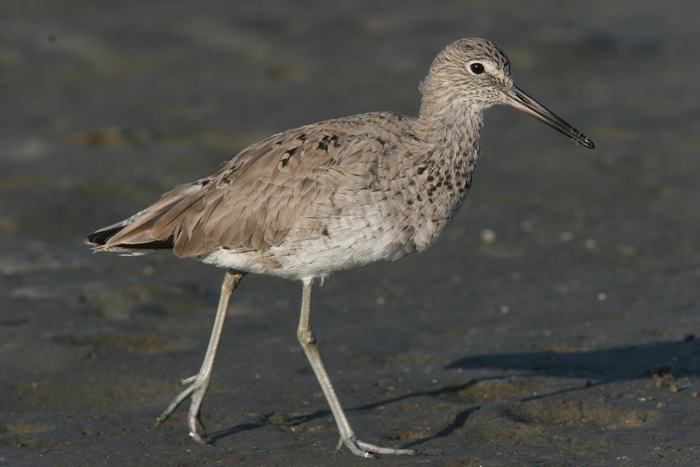
Date: 2007-04-03
Lens: Canon 600mm IS F4 + 1.4x II Converter

 Willet
Catoptrophorus semipalmatus
Willet
Catoptrophorus semipalmatus
 Description
DescriptionThis plain looking shorebird is most commonly seen feeding in small groups along the waters edge. If any of the birds in the group are startled and take flight, the rest will immediately follow. They feed on aquatic invertebrates and occasionally fish.
Pale gray or brown head, back of neck, back, upperwings, and breast. White belly, front of neck, and underparts. White patch on forehead. Whitish tail with dusky end band. Striking black and white wing pattern that can be seen during flight. Breast and flanks may be barred with a narrow, dark pattern. Long blue-gray legs. Medium length black or blue-gray bill with darker tip. Sexes similiar. 13 to 15 inches in length.
Coastal beaches, freshwater marshes, saltwater marshes, and lakeshores.
 Nesting
Nesting4 olive-buff eggs with brown spots and a 22-29 day incubation period. Fledging occurs ? days after hatching. The nest is depression in the ground, or a grass clump, lined with weeds or bits of shell.